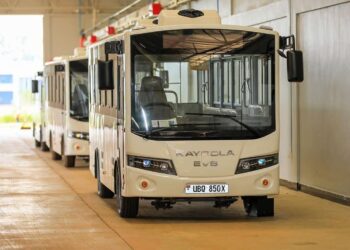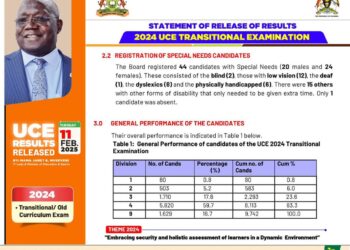Economic integration, the process in which two or more states in a broadly defined geographic area reduce a range of trade barriers to advance and protect a set of economic goals. It is in its political dimension that economic integration differs from the broader idea of regionalism in general.
The East African Community aims to achieve prosperity, competitiveness, security, stability and political unification in East Africa. The partner countries – Kenya, Uganda, Tanzania, Rwanda and Burundi – aim to create a political federation that would expand and reinforce economic, political, social and cultural integration. People’s quality of life is to be improved through increased security, greater competitive capacity, value added, trade and investment.
The East African Community has recognised that economic integration can succeed only if peace, stability and security are established throughout the region. It therefore focuses its efforts on crisis prevention, conflict resolution, small arms and light weapons control, and the promotion of good governance. These efforts are being hindered, however, by weak institutional structures within the EAC secretariat, including in particular, the lack of a Directorate for Peace and Security and inadequate implementation of regional strategies and standards within the partner countries.
The EAC Secretariat is in a good position to unite the partner countries in implementing joint activities to achieve peace and security and provide support for implementing these activities.
Regional economic integration has enabled countries to focus on issues that are relevant to their stage of development as well as encourage trade between neighbors.
There are four main forms of regional economic integration namely: *Free trade area,* the most basic where member states eliminate all barriers to trade between themselves but free to independently determine trade policies with non member nations. *Custom union,* which provides for economic integration as in a free trade zone where barriers are removed between member countries. *Common Market,* which allows for the creation of economically integrated Markets between member countries, for example the Common Markets for Eastern and southern Africa(COMESA) *Economic union,* created when countries enter into an economic agreement to remove barriers to trade and adopt common economic policies, European Union is a good example of Economic union(EU)
The European Union (EU) is the most integrated form of economic cooperation.
The EU originally began in 1950 to end the frequent wars between neighboring countries in the Europe. The six founding nations were France, West Germany, Italy, and the Benelux countries (Belgium, Luxembourg, and the Netherlands), all of which signed a treaty to run their coal and steel industries under a common management. The focus was on the development of the coal and steel industries for peaceful purposes.
In 1957, the six nations signed the Treaty of Rome, which established the European Economic Community (EEC) and created a common market between the members. Over the next fifty years, the EEC added nine more members and changed its name twice—to European Community (EC) in the 1970s and the European Union (EU) in 1993.
The entire history of the transformation of the EEC to the EU has been an evolutionary process. However, the Treaty of Maastricht in 1993 stands out as an important moment; it’s when the real economic union was created. With this treaty, the EU identified three aims. The first was to establish a single, common currency, which went into effect in 1999. The second was to set up monetary and fiscal targets for member countries. Third, the treaty called for a political union, which would include the development of a common foreign and defense policy and common citizenship. The opening case study addressed some of the current challenges the EU is facing as a result of the impact of these aims. Despite the challenges, the EU is likely to endure given its historic legacy. Furthermore, a primary goal for the development of the EU was that Europeans realized that they needed a larger trading platform to compete against the US and the emerging markets of China and India. Individually, the European countries would never have the economic power they now have collectively as the EU.
Today, the EU has twenty-seven member countries. Croatia, Iceland, Macedonia, and Turkey are the next set of candidates for future membership. In 2009, the twenty-seven EU countries signed the Treaty of Lisbon, which amends the previous treaties. It is designed to make the EU more democratic, efficient, and transparent and to tackle global challenges, such as climate change, security, and sustainable development.
The European Economic Area (EEA) was established on January 1, 1994, following an agreement between the member states of the European Free Trade Association (EFTA) and the EC (later the EU). Specifically, it has allowed Iceland (now an EU candidate), Liechtenstein, and Norway to participate in the EU’s single market without a conventional EU membership. Switzerland has also chosen to not join the EU, although it is part of similar bilateral agreements.
The EU is a unique organization in that it is not a single country but a group of countries that have agreed to closely cooperate and coordinate key aspects of their economic policy. Accordingly, just like the East African Community, the organization has its own governing and decision-making institutions namely the European Council, the European Commission, the European Parliament, the Council of the European Union and the Court of Justice.
The biggest advantage of EU membership is the monetary union. Today, sixteen member countries use the euro. Since its launch, the euro has become the world’s second-largest reserve currency behind the US dollar. It’s important to remember several distinctions. First, the EU doesn’t consist of the same countries as the continent of Europe. Second, there are more EU member countries than there are countries using the euro. Euro markets, or euro countries, are the countries using the euro.
The European single market is the foremost advantage of being a member of EU. According to Europa, which is the official website of the EU (http://europa.eu), the EU member states have formed a single market with more than five hundred million people, representing 7 percent of the world’s population. This single market permits the free flow of goods, service, capital, and people within the EU. Although there is a single tariff on goods entering an EU country, once in the market, no additional tariffs or taxes can be levied on the goods.
Businesses conducting business with one country in the EU now find it easier and cheaper, in many cases, to transact business with the other EU countries. There’s no longer a currency–exchange rate risk, and the elimination of the need to convert currencies within euro markets reduces transaction costs. Further, having a single currency makes pricing more transparent and consistent between countries and markets.
Despite the perceived benefits, economic policymakers in the EU admit that the Union’s labor markets are suffering from rigidity, regulation, and tax structures that have contributed to high unemployment and low employment responsiveness to economic growth. This is the case, particularly, for relatively low-skilled labor.
Europe’s economy faces a deeper recession and a slower recovery than the United States or other parts of the world. Because the EU’s $18.4 trillion economy makes up 30 percent of the world economy, its poor prospects are likely to rebound on the United States, Asia, and other regions. Fixing the EU’s banking system is particularly tricky, because sixteen of the twenty-seven countries share the euro currency and a central bank, but banking regulation mostly remains under the control of the national governments.27
The Europe 2020 strategy put forth by the European Commission sets out a vision of the EU’s social market economy for the twenty-first century. It shows how the EU can come out stronger from this crisis and how it can be turned into a smart, sustainable, and inclusive economy delivering high levels of employment, productivity, and social cohesion. It calls for stronger economic governance in order to deliver rapid and lasting results.
In the past decade of the East African Community, there has been an increase in trading blocs with more than one hundred agreements in place and more in discussion. A trade bloc is basically a free-trade zone, or near-free-trade zone, formed by one or more tax, tariff, and trade agreements between two or more countries. Some trading blocs have resulted in agreements that have been more substantive than others in creating economic cooperation.
There are more than one hundred regional trade agreements in place, a number that is continuously evolving as countries reconfigure their economic and political interests and priorities. Additionally, the expansion of the World Trade Organization (WTO) has caused smaller regional agreements to become obsolete. Some of the regional blocs also created side agreements with other regional groups leading to a web of trade agreements and understandings.
Lukanga Samuel
lukangasamuel55@gmail.com
+256 785717379 +256 750162100
The writer is a social development enthusiast and a judicious youth leader from Nakaseke District.
Do you have a story in your community or an opinion to share with us: Email us at editorial@watchdoguganda.com













